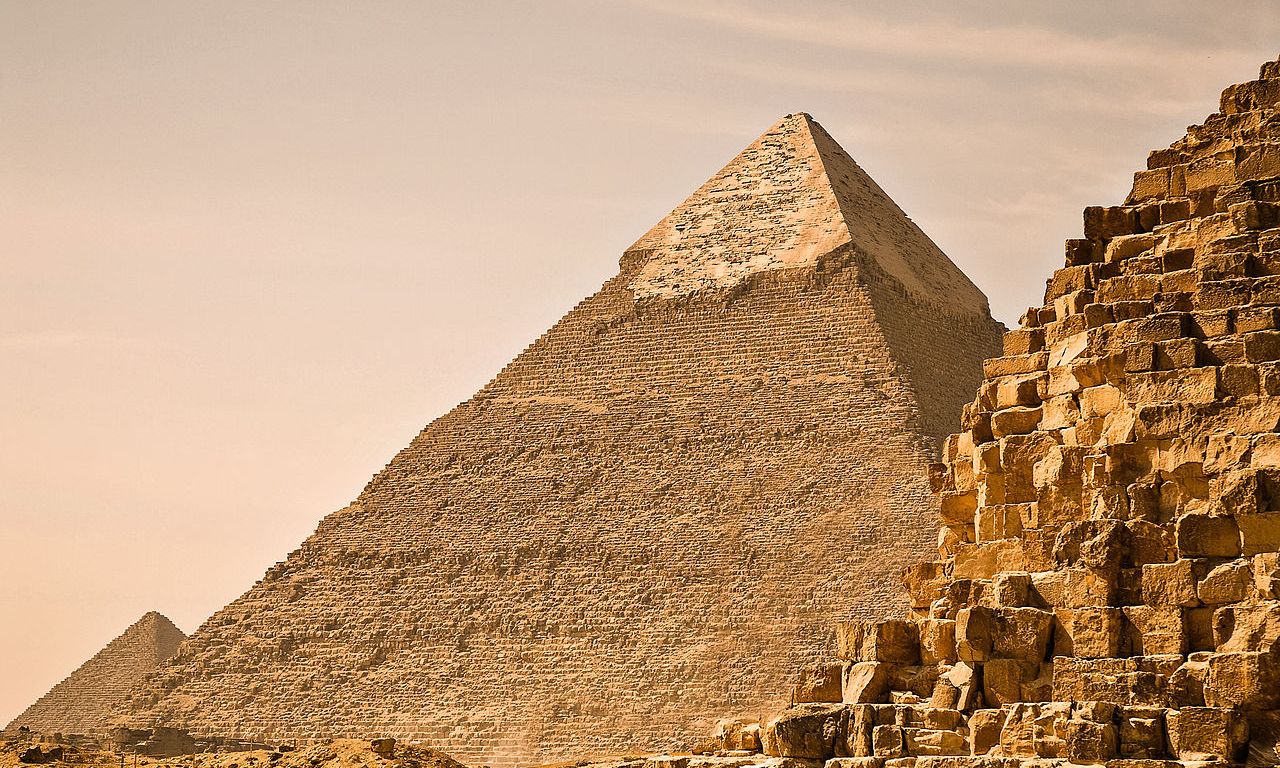The Great Pyramid of Giza is the largest of the Egyptian pyramids and the final resting place of the pharaoh Khufu
Photo: Mstyslav Chernov
Archaeologists have announced the discovery of a 9m-long tunnel above the entrance of the Great Pyramid of Giza, home to the tomb of the Fourth Dynasty pharaoh Khufu who ruled in the third millennia BC.
Zahi Hawass, Egypt’s high-profile archaeologist and former antiquities minister, hailed the tunnel as “the most important discovery of the century” at a press briefing held 2 March. The discovery will lead to “more revealing secrets”, he added, saying that “there is a great possibility… that the tunnel is protecting the actual burial chamber of King Khufu”.
The tunnel was unearthed by ScanPyramids, a consortium launched in 2015 by researchers at universities in France, Germany, Canada, Japan and Egypt. The archaeologists discovered the tunnel in 2016, using non-invasive technology to look inside the 4,500-year-old structure.
The Scan Pyramids team used cosmic ray muon radiography to track the level of radiation passing through the pyramid walls, a technique which helped detect hidden chambers including the entrance corridor. A small camera used in medical procedures was also used to photograph the tunnel.
“We realised that it was so close to the surface that an endoscopy [a procedure used to look inside the body] was possible,” Sébastien Procureur, an academic at the University of Paris-Saclay and ScanPyramids member, told the Daily Mail. “It's a controversial opinion, but I'm relieved the cavity was empty. I wouldn't have liked to participate in opening a tomb,” he added.
Details of the tunnel’s shape and structure were published in the Science journal Nature which states that “a stone slab with a gabled structure called the ‘chevron’ has been located at the top of the entrance connected to the descending corridor made at the time the pyramid was built”.
Mostafa Waziri, head of the Egyptian government’s supreme council of antiquities, told reporters at the briefing: “The corridor was likely constructed as a functional architectural feature to relieve the weight of the pyramid, possibly on either side of the main entrance, or another hidden chamber yet to be discovered. Everyone has a deep belief we will uncover the relics of King Khufu, of whom we have only found an 8cm statue.”
Five rooms located in another part of the pyramid are also thought to have been constructed to redistribute weight around the ancient landmark.

